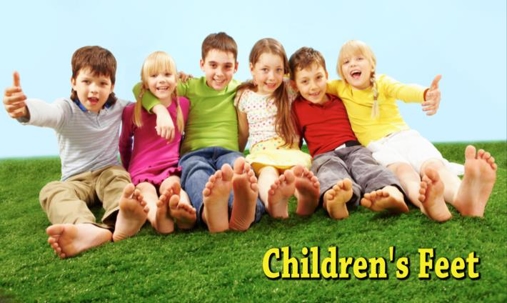Due to your child’s rapidly growing bones and tendons, many symptoms associated with foot and ankle problems can go unnoticed. For this reason, it is important parents pay attention to even subtle symptoms. Thorough, regular exams of your child's feet by a podiatrist may detect an underlying defect or condition and help minimize problems later in life.
Common Foot Problems
Children can experience a variety of foot problems, many of which go away as the child’s feet become more developed. This includes pigeon toes, flat feet and knock knees. In most cases, this congenital foot and leg problems do not require any medical intervention.
Plantar Warts
Plantar warts are common in children, especially during warm months when kids are more likely to walk barefoot. Forming on the bottom of the feet, these warts are caused by a virus that enters the skin, most often in public areas such as pools or locker rooms. The condition can be very uncomfortable — like walking on a small pebble or stone — but is also highly preventable and treatable.
Ankle Sprains
Ankle sprains are very common foot injuries for active kids, especially those who participate in sports. Sprains occur when the ligaments supporting the ankle are stretched or torn. Mild ankle sprains heal with treatment, while severe tearing may require more extensive care, including extended immobilization followed by physical therapy. As a general rule, rest, ice, compress and elevate the child’s ankle immediately following the injury.
Ingrown Toenails
Ingrown toenails occur when one or both sides of the nail begin to break through and grow into the soft skin of the toe. This can lead to painful irritation and infection. Common causes of ingrown toenails include poorly fitting footwear, toe injuries or poor nail trimming. Caught early, a child’s ingrown toenail can be treated at home, but if the pain persists or the condition worsens, treatment by a podiatrist is necessary to eliminate the infection.
Choose Proper Footwear
Many pre-existing foot conditions can be relieved and new problems prevented by simply ensuring your child is wearing proper shoes. Shoes that are too tight can cause blisters, calluses, and corns on the toes and heels. Ingrown toenails can also develop and become infected. A child’s feet are constantly growing and developing, so it may be necessary to change shoe size every few months. Additionally, shoes have a tendency to lose proper cushioning and arch support over time. Footwear that shows a lack of shock absorption or wear and tear should also be replaced to reduce the risk for injuries.
If you notice your child limping, constantly rubbing their feet, tripping frequently or consistently complaining of foot pain, then have them examined by your podiatrist or physician. Many problems can be easily identified and treated, and early intervention is the key.

